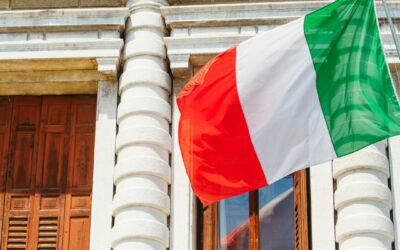Optional packaging labeling in Spain: What you need to know




Since January 2023, there have been significant changes in the area of packaging labelling in Spain. The previous obligation to affix the Green Dot (“Der Grüne Punkt”) symbol to packaging no longer applies. Since then, companies have been able to choose whether they want to use this symbol on their packaging. This new regulation brings advantages for exporters to Spain, as they are now exempt from the previous licence fees and administrative costs.
Optional use of the Green Dot ("Der Grüne Punkt") in packaging labeling
The change in the law now offers companies the flexibility to decide for themselves whether they want to display the Green Dot (“Der Grüne Punkt”) symbol on their packaging. Those that choose to retain the symbol can continue to do so. On the other hand, companies that decide not to use the symbol now have the freedom to remove it from their packaging. This innovation simplifies and flexibilises the process for manufacturers and retailers.
Causes for the new regulation
In the past, exporters who shipped their products to Spain had to affix the Green Dot (“Der Grüne Punkt”) symbol to their packaging and register it with a local licensing body. This requirement was lifted as it was recognised that the symbol alone did not provide sufficient information about the recyclability of the packaging. It mainly served as proof that the manufacturer or retailer was making a financial contribution to the recycling process. This obligation is now covered by registration in the central packaging register.
Further changes for Amazon retailers in Spain
For all those who sell their products on Amazon, there are important changes to consider before the end of the year, especially when it comes to selling on amazon.es.
Spain has issued new regulations, including Royal Decree 1055/2022 on packaging and packaging waste and Law 7/2022 on waste and contaminated land in the context of a circular economy.
What needs to be done?
- Show compliance: In order to comply with the extended producer responsibility for packaging, distributors need a Spanish tax number (NIF) and an authorized person in Spain. Amazon supports these companies with the EPR service.
- Ministry of Miteco: On the website of the Ministry of Miteco, distributors must select the appropriate Producer Responsibility Organization for their products and register in the producer directory.
- Environmental fees: Depending on the organization selected, environmental fees may apply. Registration must be completed by December 31, 2023, otherwise Amazon will pay on behalf of the company placing the product on the market.

LIZENZERO.EU makes packaging compliance in Europe very easy.
Do you ship your products to different countries in the EU? Many different legal requirements and obligations can make the whole thing quite complicated – but don’t worry, we’ll do it for you. How do we do it? With our licensing service, we take over all obligations for you by power of attorney. Sounds good? We’ll be happy to advise you.
For shipping to Germany, you can easily fulfill your packaging obligations yourself via Lizenzero.de.
PPWR update: an overview of recent developments
The European Union wants to implement more measures to promote sustainable packaging solutions. This is reflected in the currently hotly debated draft of the Packaging & Packaging Waste Regulation (PPWR), which was presented in November 2022. This regulation contains binding rules for packaging and packaging waste in the European single market and significantly expands the existing EU directives. However, the PPWR is not yet a done deal; it still has a few hurdles to overcome before it finally comes into force. We will keep you up to date on the latest status in this article.
EPR systems for packaging in comparison: a country overview
In the EU, retailers and manufacturers who place products on the market are subject to certain environmental responsibilities. Extended Producer Responsibility (EPR) is a way of obliging companies to take responsibility for the entire life cycle of their products. This includes not only the product itself, but also all packaging and (product) components put into circulation that are disposed of by end consumers. The exact areas covered by the EPR vary from country to country. In this article, we take a look at the EPR in the area of packaging and shed light on what exactly the requirements mean, how they are implemented in practice and how the requirements differ from country to country within the EU.
When will Italy introduce the single-use plastic tax?
The introduction of the single-use plastic tax in Italy was originally planned for July 2020. It has now been postponed for the sixth time and is due to come into force on 1 July 2024. The tax aims to tax single-use packaging and plastic products. In this article, we explain what legal changes retailers can expect for their shipments to Italy as a result of the introduction of the tax.




